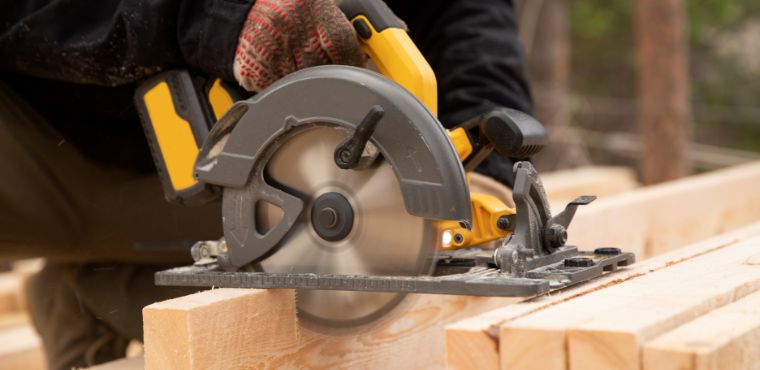When you live 100 miles or more from the nearest big box store, you don’t want to be caught without the right tools for home repairs and projects.
People out here must be self-reliant; if nothing else, it sure costs less! Doing home repairs, building decks, fixing machinery, and working with construction materials comes with the territory. At any given moment, you might need to cut pipes, corrugated metal, fencing, tile, or stone. Various kinds of saws can help with these tasks.
Of course, you’ll use the good sense you were born with to take appropriate safety measures, like wearing eye protection, hard-toe work boots, gloves, and a respirator where the materials require them. When working with corded electric tools, a clean, dry workspace is essential, and keeping kids away when you’re working with cutting tools is a no-brainer.
Careful attention to your tools and your workpieces can ensure you come home with the same number of fingers you had when you left. Now, on to the saws you might need for your bevy of home improvement projects; here’s a list of different types of saws you should have in your toolshed.
Chainsaw
If your property sustains storm damage, you’re going to need a chainsaw to clean up the debris. If you need to clear a new section of land, you can use a chainsaw to take care of branches and saplings that you must remove.
Keeping a chainsaw lubricated and clean can be a pain, but it’s important to ensure the longevity and safe operation of your chainsaw, as is proper protective gear. Never use a chainsaw above shoulder height or while standing on a ladder. If you need to remove big trees, call in the pros.
Hacksaw
Cutting and replacing damaged sections of metal or plastic pipe is best done with a hacksaw. You’ll get a cleaner more precise cut and have better control than with other types of manual saws.
Circular Saw
Cutting plywood, wood studs, some types of metal, or concrete and stone requires a handheld circular saw. The power and RPMs the saw can produce are part of the equation, but choosing the right type of blade for the job is essential.
Rip Saw
Everyone knows you should have this type of saw in your tool collection. You may already have one handed down from your grandfather. These muscle-powered saws are essential for jobs that are too small or awkward for power saws. They’re also ideal when you have a small job and don’t feel like going through the hassle of plugging in your electric saw and ensuring you don’t trip over the cord.
Other types of saws you may want to explore are jigsaws for cutting curves in lumber, table saws for cutting sheets of plywood or fiberboard, and miter saws for repeat crosscuts or angles for joinery.
If you’re perplexed about a repair or construction job you’re looking to do, don’t fret. You likely have a neighbor within a reasonable distance who might have experience and advice that can help. If you feel like you’re in over your head, the safest course might be to grit your teeth and hire a professional—what you pay for their services might end up saving you in emergency room costs!







